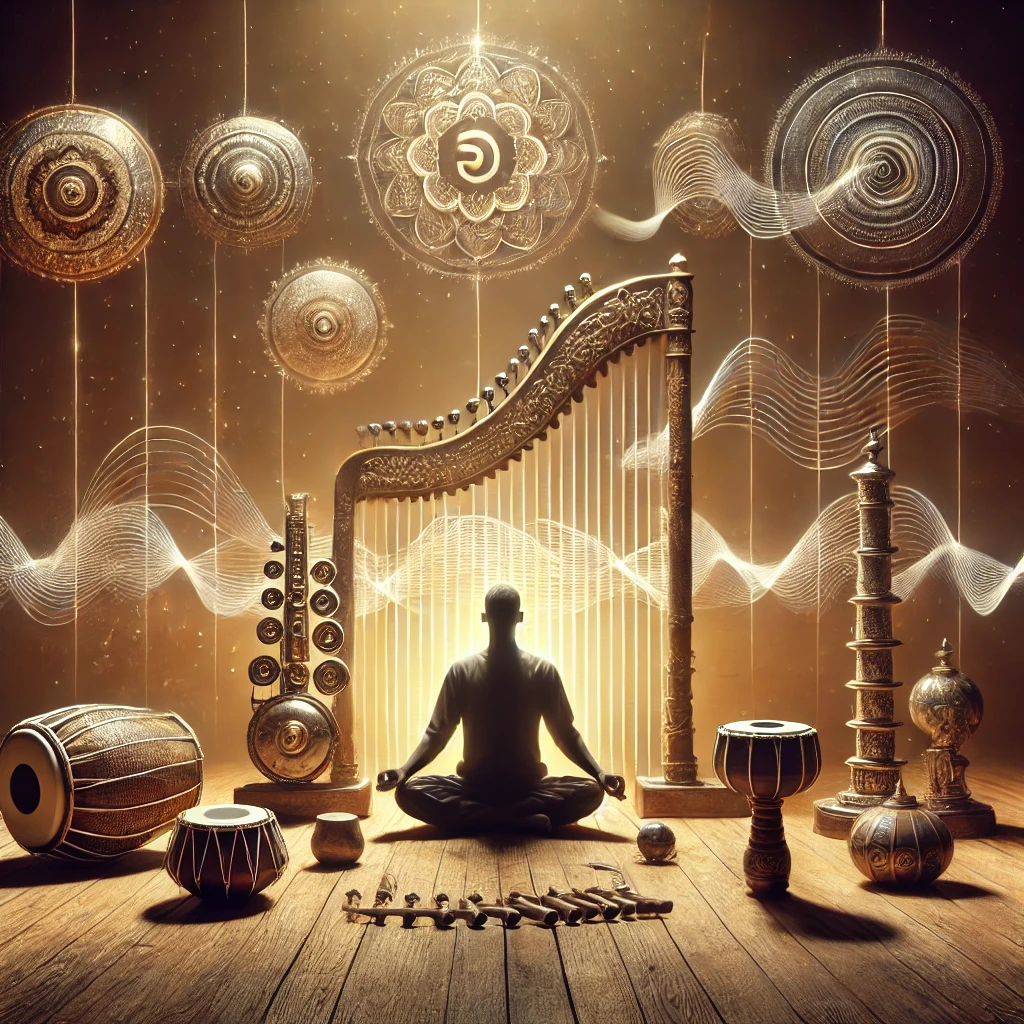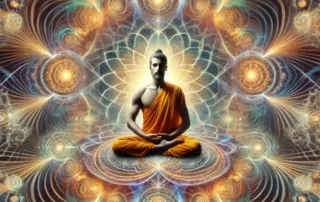1. What is Naadayaama, and how does it differ from traditional sound healing?
Naadayaama is a unique sound healing approach that delves into the five koshas, or layers of the body, using a blend of Indian folk instruments and chants. Unlike traditional sound healing, it’s rooted in both ancient sound philosophies and modern frequency healing, allowing participants to connect deeply with the energy fields and dimensions within themselves.
2. How does sound healing work in the Naadayaama method?
In Naadayaama, sound is used as a carrier of energy that interacts with the body’s natural vibrations. By tuning into specific frequencies through instruments and chants, Naadayaama helps align each kosha, harmonizing the physical, energetic, mental, intuitive, and bliss layers of the body, promoting deep relaxation and self-awareness.
3. Can anyone participate in Naadayaama sound healing sessions?
Yes, Naadayaama sound healing is suitable for all ages and backgrounds, whether one is new to sound healing or experienced. The practice is designed to meet participants where they are on their wellness journey, making it accessible and deeply impactful for everyone.
4. What benefits can one expect from a Naadayaama sound healing session?
Participants often experience deep relaxation, emotional release, mental clarity, and a heightened sense of connection to themselves. Long-term, Naadayaama can help improve focus, reduce stress, support better sleep, and increase feelings of balance and well-being by harmonizing the body’s energy fields.
5. How are the koshas, or layers of the body, involved in Naadayaama sound healing?
The koshas represent layers of the body and consciousness. Naadayaama targets these layers by channeling specific sound frequencies that resonate with each kosha, allowing participants to go beyond physical healing to achieve mental, emotional, and spiritual alignment.
6. What instruments are used in Naadayaama, and why are they significant?
Naadayaama employs Indian folk instruments that connect to natural elements and evoke the koshas, such as the veena, mridangam, and wind instruments. These instruments produce authentic vibrations, invoking the body’s own healing response and grounding participants in a timeless, organic rhythm.
7. How does chanting enhance the Naadayaama experience?
Chanting is integral to Naadayaama as it activates the body’s energy centers (chakras) and amplifies the healing effects of the sound frequencies. Chants carry sacred sounds that, when repeated, create vibrational patterns resonant with the natural energy flow within the body, aiding in physical and emotional release.
8. Is Naadayaama based on any specific spiritual or cultural traditions?
Naadayaama draws from ancient Indian sound science, including the principles of Vedic and Tantric traditions, while remaining inclusive and accessible. Its approach is a respectful integration of sound’s universal healing properties, allowing participants from all backgrounds to benefit.
9. How many sessions are needed to feel the benefits of Naadayaama?
Many participants feel a shift in their energy and mood after just one session. However, for lasting transformation and deeper alignment, regular sessions are recommended. Each session builds upon the previous, gradually integrating sound frequencies into the body’s energy system for long-term well-being.
10. Can Naadayaama be combined with other wellness practices?
Absolutely. Naadayaama complements practices like yoga, meditation, and breathwork, enhancing their effectiveness by aligning the body’s energy fields. When combined, these practices offer a holistic approach to wellness, promoting both inner calm and external balance.

Advanced FAQ’s into our work.
1. How does Naadayaama facilitate altered states of consciousness?
Naadayaama uses specific frequencies that resonate with the brain’s natural rhythms, promoting a state of relaxed focus where the mind is more open to visions and introspective experiences. These sound frequencies can induce theta waves in the brain, similar to the states achieved during deep meditation, allowing participants to explore inner landscapes and emotional insights.
2. Can sound healing lead to visionary experiences?
Yes, sound healing in Naadayaama is known to evoke visionary experiences. These can be symbolic or abstract, as the mind opens to new patterns and frequencies. Such visions are often tied to unresolved emotions or intuitive insights, helping participants gain a deeper understanding of themselves and their life path.
3. What role do musical intervals and scales play in Naadayaama?
Musical intervals and scales are carefully chosen in Naadayaama to align with specific energy frequencies. Indian classical music scales, like Ragas, each evoke distinct emotions and energy flows, impacting the body and mind on a subtle level. This intentional use of scales can shift energy within the koshas and chakras, encouraging release, healing, or clarity.
4. Is there scientific backing for the impact of sound on consciousness?
Absolutely. Studies in neuroscience show that sound and music can impact brainwave activity, heart rate, and even cellular structure. Frequencies and rhythms have been scientifically proven to affect brainwave patterns, guiding the mind into states that mirror deep meditation or lucid dreaming, which supports Naadayaama’s effectiveness.
6. How does sound healing impact the pineal gland, often associated with spiritual visions?
Sound frequencies, especially those aligned with specific vibrations like theta and delta waves, can stimulate the pineal gland, sometimes referred to as the “third eye.” When activated, the pineal gland releases serotonin and melatonin, which play roles in perception and mood regulation, potentially enhancing visionary experiences and intuitive insights.
7. Can Naadayaama help with emotional release and inner clarity?
Yes, Naadayaama’s frequencies often resonate with subconscious emotional patterns, making it easier for participants to release pent-up emotions. This release fosters inner clarity, as unresolved emotions are processed and integrated, creating space for higher self-awareness and peace.
8. What types of music frequencies are used in Naadayaama to create altered states?
Naadayaama uses a variety of frequencies, from the deep, grounding vibrations of low tones to high, ethereal frequencies that stimulate clarity and insight. These frequencies are combined in ways that mirror natural sound patterns, allowing the mind to enter an immersive, meditative state conducive to inner vision.
9. How does Naadayaama integrate with traditional meditation practices?
Naadayaama complements meditation by creating a soundscape that gently guides the mind into a receptive state. Participants who practice meditation may find that the sound frequencies help deepen their focus and enhance their ability to enter transcendental states, enriching their spiritual practice.
10. Are there specific sensations associated with Naadayaama’s altered states?
Yes, many participants report sensations such as tingling, warmth, or lightness, often localized around energy centers or chakras. These sensations are natural responses to the body aligning with the sound frequencies, signifying a shift in the energetic flow and allowing deeper states of consciousness to emerge.




